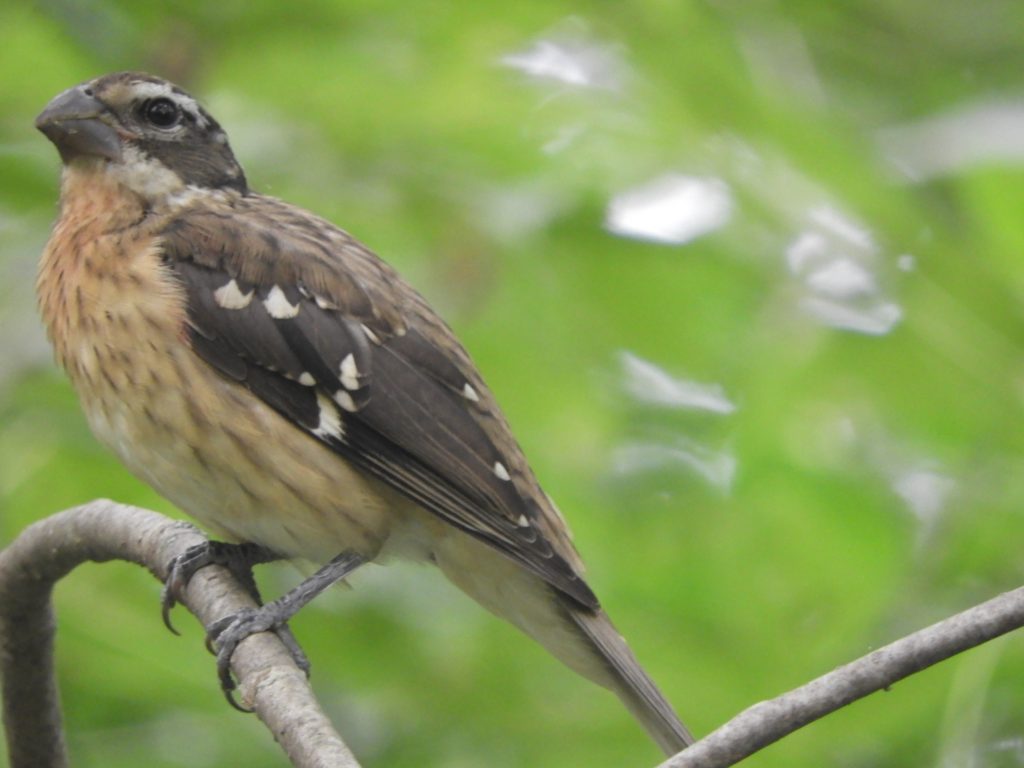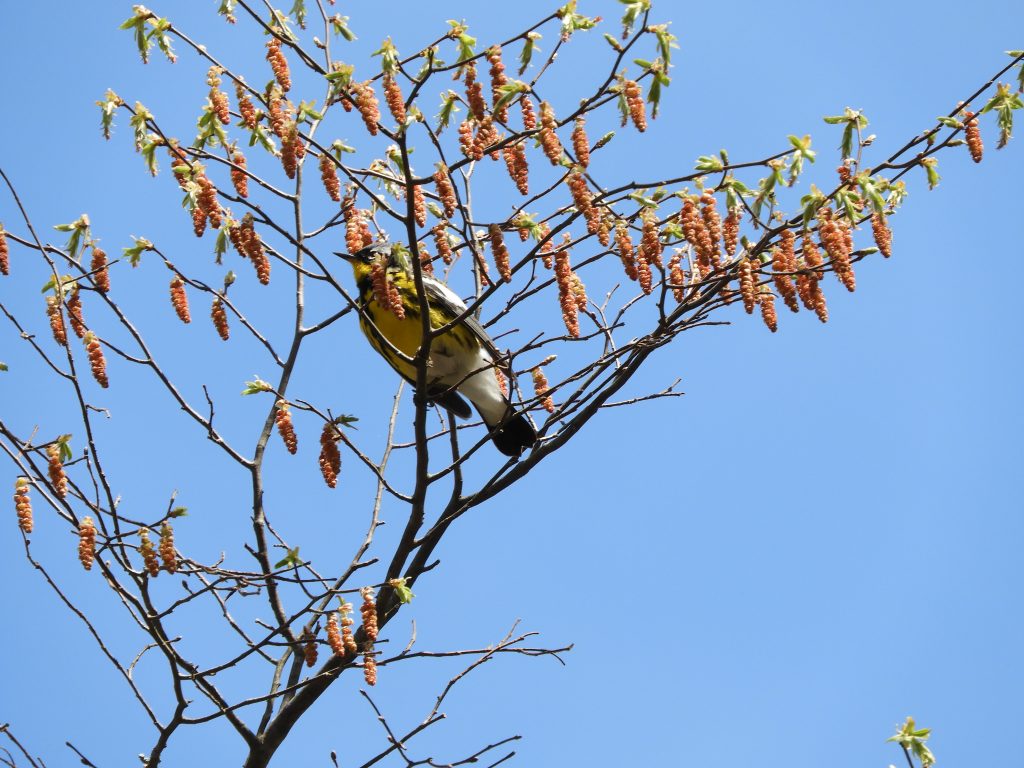September 1 2019. Hendrie Valley, Burlington, ON. My first transect of the month got off to a dreary start and for quite a while I thought my day’s count might not be much better than a January day. But the species count gradually crept up (as it should) although the numbers of individual birds was low.
It all started to pick up towards the end. I found a group of five juvenile Rose–breasted Grosbeaks who were moving around slowly and often making themselves easy to photograph and, to my pleasure, sometimes singing softly with notes rather like those of an Eastern Bluebird (see previous post).

As I photographed the grosbeaks I could hear a Red-eyed Vireo singing patchily off to my right prompting an inward smile of satisfaction; finally something new. Then birds started popping up to challenge me, different birds, and in rapid succession I was following the flitting of several warbler-sized birds.
Our familiar and often challenging spring warblers, can look anywhere from completely to quite different in late summer and fall. The Peterson Field Guide to the Birds used to dedicate a page to ‘Confusing Fall Warblers’, maybe more recent editions still do; the caution has taken root in culture and many birders balk at the prospect of sorting them out, – with some justification. The point of this is to note that my fall-warbler identification skills felt a bit rusty and a couple of birds wandered out of sight before I could i.d them. I did manage to clearly identify one of each of American Redstart, Black and White and Black–throated Blue Warblers (they don’t change), a couple of Chestnut–sided Warblers gave me pause for a moment but the bright green of their crowns and backs is distinctive (and memorable). I thought for a while I was watching a Bay-breasted Warbler, I couldn’t be sure, it was plausible, but I set it aside. A brief challenge came with a brightly yellow-fronted bird with faint streaks on its flanks, as my brain sorted through the possibilities, the bird hung head-down for a moment showing a sharply divided underside of its tail, half black, half white – Magnolia Warbler, unmistakable, always charming, and Bird of the Day for making me feel a lot more secure about Confusing Fall Warblers.
